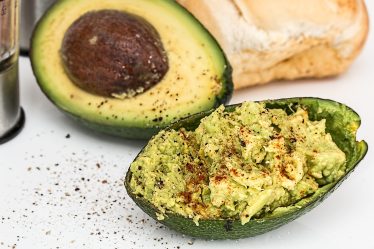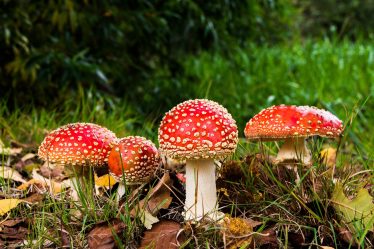What do human, pathogens, virus, bacteria, germs, animals, fish, plants and trees have in common?
All of these living things, including humans, pathogens, viruses, bacteria, germs, animals, fish, plants, and trees, have a natural instinct or drive to preserve their own lives. This is known as self-preservation or survival instinct, and it is present to varying degrees in all living things. The ultimate goal of this instinct is to ensure the continuation of the species or individual organism. This drive to survive is evident in behaviors such as seeking food, avoiding danger, and reproducing.
For all living things, death occurs when certain conditions are met. These conditions can vary widely depending on the species or organism in question, but typically include factors such as old age, disease, injury, predation, environmental changes, lack of resources, or genetic factors.
For humans, death can occur due to a variety of reasons including diseases such as heart disease, cancer, or infections, as well as external factors like accidents or natural disasters. Pathogens and viruses can die off due to the host’s immune system, changes in the environment, or through the use of antibiotics or other treatments. Bacteria and germs may also die due to changes in their environment, exposure to antibiotics, or competition with other bacteria.
For animals, death can occur due to a variety of reasons including old age, predation, disease, and environmental factors such as changes in habitat, food supply, or climate. Fish can die due to a variety of factors including overfishing, water pollution, and disease.
Plants and trees can die due to a variety of factors including disease, insect infestations, changes in climate, soil erosion, and overgrazing by animals. Overall, death is a natural part of the life cycle of all living things, and it allows for new generations to continue the cycle of life.
Pathogens and viruses can be effectively controlled or eliminated through various mechanisms, including the host’s immune system, changes in the environment, and through medical treatments.
The host’s immune system is designed to defend the body against invading pathogens and viruses. In some cases, the immune system is able to effectively eliminate the pathogen or virus, thus preventing the disease from spreading. However, some pathogens and viruses are able to evade the immune system, leading to the development of a chronic or persistent infection.
Environmental changes can also play a role in the survival and replication of pathogens and viruses. For example, changes in temperature or humidity can impact the growth and survival of these organisms. The presence of other microbes, such as bacteria, can also affect the survival of pathogens and viruses.
Finally, medical treatments such as antibiotics and antivirals can be used to control and eliminate pathogens and viruses. Antibiotics are specifically designed to target bacteria, while antivirals target viruses. These treatments work by interfering with the growth and replication of the pathogen or virus, ultimately leading to its death.
The death of pathogens and viruses can occur through a variety of mechanisms, including the host’s immune system, changes in the environment, and medical treatments. These mechanisms work to control and eliminate these organisms, reducing the spread of disease and promoting health.
While antibiotics and antivirals are the primary medical treatments used to kill pathogens and viruses, there is growing interest in alternative treatments as well. These treatments often focus on boosting the body’s own immune system or using natural remedies to target pathogens and viruses.
One such alternative treatment is the use of probiotics, which are live microorganisms that can help to restore the balance of bacteria in the gut. Probiotics have been shown to improve gut health and enhance the body’s natural defenses against invading pathogens and viruses.
Herbal remedies and dietary supplements are another alternative treatment that are commonly used to target pathogens and viruses. For example, Echinacea and garlic have been used for centuries as natural remedies to boost the immune system and fight infections.
Homeopathy is another alternative treatment that is gaining popularity. Homeopathic remedies are based on the principle of “like cures like,” and are designed to stimulate the body’s natural healing processes. Many homeopathic remedies are designed to target specific pathogens and viruses, and are believed to help boost the body’s natural defenses against these harmful microorganisms.
In addition, there are alternative therapies such as acupuncture and massage that are used to stimulate the body’s natural healing processes and boost the immune system.
While antibiotics and antivirals are the mainstays of medical treatment for pathogens and viruses, there are alternative treatments available that can be used to target these harmful microorganisms. These treatments aim to boost the body’s natural defenses and promote health, and may be especially useful for those who are looking for more natural and holistic approaches to healthcare.
One strategy for making the human body inhospitable for viruses, including HIV/AIDS, is to create an environment that is not conducive to their survival and replication. This can be done through various means, including improving the body’s immune system, maintaining a healthy lifestyle, and using medical treatments.
Improving the body’s immune system is key to fighting off viruses and other pathogens. This can be done through proper nutrition, exercise, and stress management, as well as avoiding activities that weaken the immune system, such as smoking and excessive alcohol consumption.
Maintaining a healthy lifestyle is also important in creating an inhospitable environment for viruses. This includes getting adequate sleep, eating a balanced diet, and avoiding behaviors that can weaken the immune system, such as excessive stress, and exposure to environmental toxins.
Medical treatments, such as antiretroviral therapy (ART), can also be used to create an inhospitable environment for viruses such as HIV/AIDS. ART is a combination of medications that target different stages of the virus’s life cycle, and it has been shown to effectively suppress the virus, reducing the risk of progression to AIDS.
It’s also important to note that practicing safe sex, such as using condoms and avoiding risky behaviors, can help prevent the spread of HIV and other sexually transmitted infections, and ultimately create a less hospitable environment for these viruses.
In conclusion, changing the environment within the human body to make it inhospitable for viruses such as HIV/AIDS involves a combination of measures, including boosting the body’s immune system, maintaining a healthy lifestyle, and using medical treatments. By creating an environment that is not conducive to the survival and replication of viruses, the risk of infection and progression to disease can be reduced.





